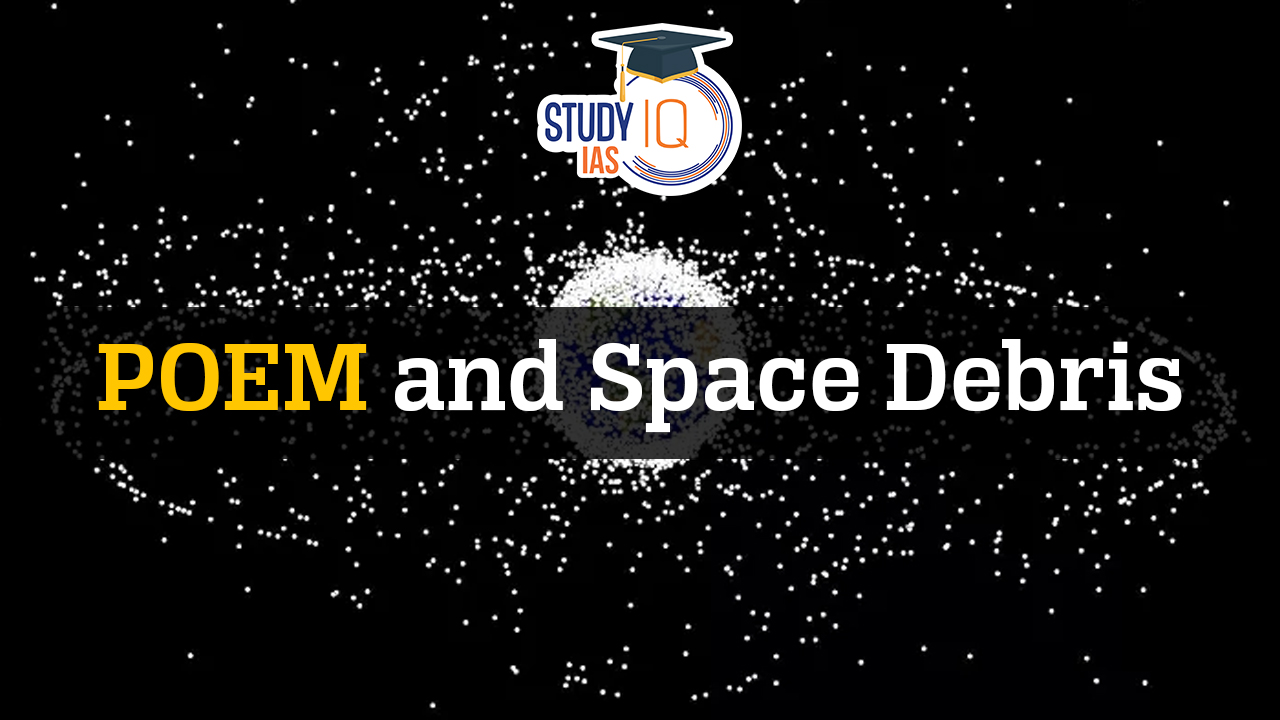Table of Contents
Context: ISRO’s PSLV-C58 mission successfully minimised space debris by transforming the spent fourth stage of the Polar Satellite Launch Vehicle (PSLV) into an orbital platform named PSLV Orbital Experimental Module-3 (POEM-3).
What is PSLV Orbital Experimental Module (POEM)?
- Developed by Vikram Sarabhai Space Centre (VSSC) as a cost-effective space platform, POEM reuses the fourth stage of a PSLV rocket as an orbital platform.
- First used in PSLV-C53 mission (June 2022) for in-orbit scientific experiments.
- Powered by solar panels, and lithium-ion batteries, and has a navigation, guidance, and control (NGC) system for stability.
- NGC uses sun sensors, magnetometer, and gyroscopes, and communicates with ISRO’s NavIC constellation for navigation.
- Also has a telecommand system to communicate with ground stations.
POEM-C58 Mission
- Launched on January 1, 2024, from Satish Dhawan Space Centre.
- Deployed XPoSat satellite in its desired orbit and lowered the fourth stage (POEM-3) to a 350 km orbit for re-entry.
- Carried nine payloads for various experiments by institutions like VSSC, Bellatrix Aerospace, TakeMe2Space, etc.
- Completed 400 orbits by the 25th day, enabling all payloads to perform their experiments.
- Re-entered Earth’s atmosphere on March 21, 2024.
Significance of Minimising Space Debris
- Growing number of satellites creates space debris, posing a threat to operational satellites.
- Low Earth Orbit (LEO) is crucial for intelligence gathering, communication, and navigation.
- According to ISRO’s 2022 report, 2,533 objects were launched into space in 2022.
- Debris also exists in Geosynchronous Orbit (GEO) but in smaller quantities.
- S. Space Command tracks debris larger than 10 cm in LEO and 0.3-1 metres in GEO.
- Incidents like a discarded battery from the International Space Station damaging a house in Florida highlight the dangers of debris.
- As per ISRO estimates, the number of debris objects larger than 10 cm in LEO is expected to reach 60,000 by 2030.
- Currently, there are no international space laws for LEO debris, but most spacefaring nations follow the 2002 Space Debris Mitigation Guidelines by IADC.


 Utkal Divas 2025: Odisha Foundation Day ...
Utkal Divas 2025: Odisha Foundation Day ...
 NASA Parker Solar Probe Flies Closer to ...
NASA Parker Solar Probe Flies Closer to ...
 List of Military Exercises of India 2024...
List of Military Exercises of India 2024...





















